Methane is all around – Part 2
28 June 2018
Methane is all around – Part 2
The last hours were really exciting. During night we were searching for a methane seep, sailing around a position where the seep was expected to be. We used two echo sound systems, a multibeam and a singlebeam system, both are commonly used for geological and oceanographic research. They are using sound waves and the acoustic backscatter to give a high resolution picture of the water column and the sea floor. This is not only useful to determine the water depth very precisely but also to detect gas plumes in the water (flares).
So last night we were starring at our monitors, excited and hoping not to miss any little bubble or peak, all being very patient for a long time.
And than we saw the plume in the water column, first as a nicely colored picture on the multibeam screen and as a single line on the singlebeam screen. After some delay time, caused by the length of tubing from the measurement instrument to the front mast, also our system showed a clear methane elevation. So four scientists were very happy! The ship staid for quite some time in this area and we were able to measure the plume several times – and also to take samples to investigate the isotopic composition.
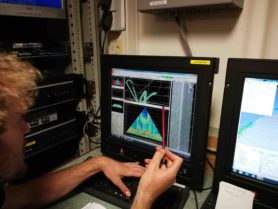 |
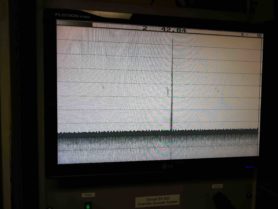 |
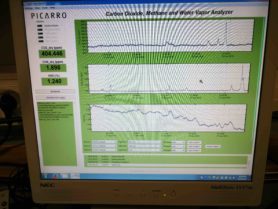 |
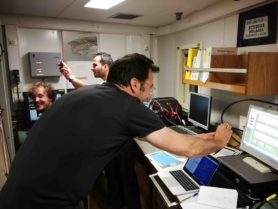 |
In the morning, a box corer was deployed. Box corer are designed to get a minimal disturbed sediment surface sample. Tim and Helge will investigate the sediment by microbiological methods on lipids and DNA, so we will learn more about the communities of microorganisms there. Also the in-situ methane concentration will be measured. When searching the sediment after sampling, we found MDAC: methane-derived authigenic carbonates. MDAC are rocks found at cold seeps, giving information of past methane seepage. They are formed as a result of bacterial breakdown of methane while water chemistry is changing. In turn calcium carbonate is precipitating, which gives the MCAC a layered structure and can be used to detect the timing of methane emissions. A very nice scientific souvenir, not only decorative but also useful to learn more about previous times on the sea floor!
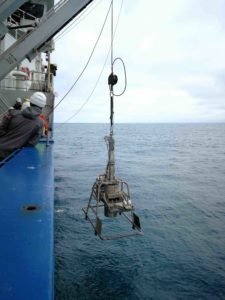
Box corer going into the water |
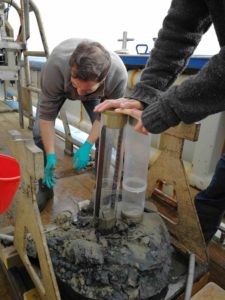
Taking cores |
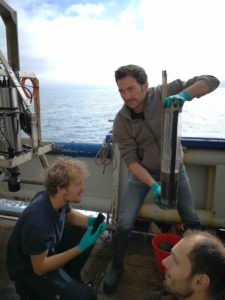
Documentation of the cores |

Taking sediment samples of different sediment layers |
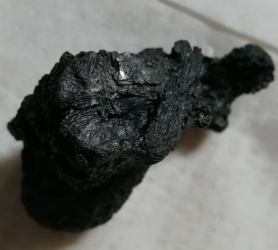
MDAC: methane-derived authigenic carbonates |
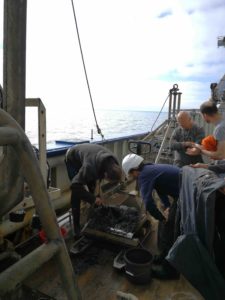
… and the left overs! Still interesting! |
While the box corer was searching the sea floor, we deployed our bucket for sampling methane emitted from the sea surface. This time we connected it directly to the Picarro to see if it will work (as we thought in theory!). So first we determined the delay time through the 15 m of tubing, and than throw it over board – never forget to keep it somehow attached to the ship! After a while we saw a slight increase of the methane concentration, which erupted when the box corer was lifted. So many bubbles came up, it was amazing to see that our measurement instrument was immediately at its detection limit. So we know now that the system works in principle, only the design needs further improvement for rough sea conditions and being less close to such seep events.

Chamber sampling unit in the water. |
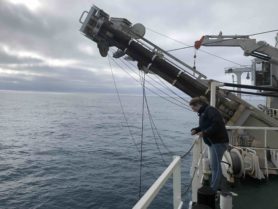
Perfect weather conditions to deploy the system: no waves, no wind. Tomorrow we will test the system above the seep and further away. |
 |
As the next two days will be very busy with a 48 hour sampling marathon, we can hopefully enjoy this evening with a sunset as beautiful as yesterday! |

